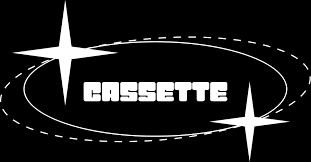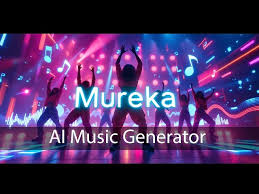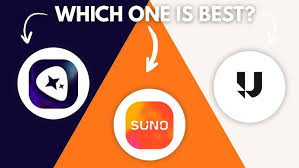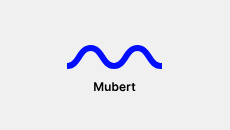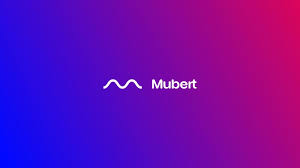Introduction: What Is AIVA and Why Are People Talking About It?
If you've been exploring AI music generation tools, you've likely heard of AIVA. Short for “Artificial Intelligence Virtual Artist,” AIVA is a powerful composition assistant designed to create original music in various styles—everything from cinematic orchestras to ambient piano.
But here’s the big question that musicians, composers, and AI enthusiasts ask: How does AIVA work?
In this in-depth guide, we’ll unpack:
The technology stack behind AIVA
How it generates music from scratch
Its learning process
Real-world use cases for creators
What makes AIVA different from other AI music generators like Suno or Udio
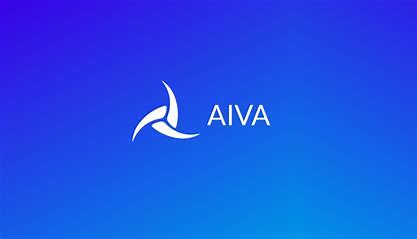
How Does AIVA Work? A Look Inside the AI Composer's Brain
At its core, AIVA works by combining deep learning algorithms with music theory. The platform doesn’t just randomly generate notes—it’s trained on a rich dataset of classical and contemporary compositions. It composes new pieces by mimicking styles, patterns, and structures found in human-created music.
Step-by-Step Breakdown:
Dataset Training
AIVA was originally trained on classical music scores from composers like Bach, Mozart, and Beethoven. Over time, it has expanded to include jazz, pop, ambient, and more. The AI learns:Chord progressions
Rhythm structures
Melodic phrases
Orchestration layers
Style Modeling
When you select a style (e.g., cinematic, romantic, electronic), AIVA accesses a style-specific neural model. This guides the composition’s tempo, instrumentation, and emotional tone.Structure Generation
AIVA doesn’t just loop a melody—it builds entire sections:It models human-like composition logic, ensuring flow and variation.
Introduction
Theme
Development
Climax
Resolution
Note-Level Composition
Every note AIVA places is guided by music theory rules, but also probabilistic AI choices. It doesn’t hard-code melodies—it composes based on patterns, just like a human might.Export & Arrangement
After generation, AIVA lets you:You can also import it into a DAW (like Logic Pro or FL Studio) for advanced production.
Export the track as MIDI, MP3, or WAV
View the sheet music
Tweak structure, instrumentation, and harmonies
What Makes AIVA Different from Other AI Music Tools?
| Feature | AIVA | Suno | Udio | Boomy |
|---|---|---|---|---|
| Score-based composition | ? Yes | ? No | ? No | ? No |
| Classical & cinematic focus | ? Yes | ? | ? | ? (Lo-fi & pop) |
| Editable sheet music | ? Yes | ? | ? | ? |
| Professional MIDI export | ? Yes | ? | ? | ? |
| Commercial license options | ? Yes | ? (TBD) | ? | ? |
Film scoring
Game development
Music education
Instrumental album creation
Real Creators Using AIVA
Game developers use AIVA to generate background scores for fantasy RPGs and puzzles.
Filmmakers create royalty-free cinematic tracks without hiring an orchestra.
YouTubers craft personalized intros that stand out from stock music.
Composers use it as a sketchpad for inspiration.
Is AIVA Just Copying Other Music?
This is a fair concern. But AIVA doesn’t plagiarize. It’s trained on licensed compositions, and the output is new. Much like a human composer influenced by Mozart, AIVA internalizes patterns—it doesn’t replicate.
Every piece is original and not found in its training data. If you generate a piano sonata in AIVA, it may sound classical—but it will be a unique composition.
Licensing and Copyright: Can You Monetize AIVA Music?
Yes, and that’s one of its key benefits. AIVA offers different usage plans:
Free Plan
Limited compositions
Personal use only
Pro Plan (From €15/month)
Full commercial rights
Export WAV/MIDI
Access to all genres
Whether you're scoring a short film or uploading to Spotify, the Pro license lets you monetize without legal risk. No hidden royalties, no Content ID issues.
FAQ: How Does AIVA Work?
Q1: Can AIVA generate vocals or lyrics?
No. AIVA focuses solely on instrumental music. For AI vocals, try tools like Udio or Voicify.
Q2: What file types can AIVA export?
MIDI, MP3, and WAV. You can also download PDF sheet music.
Q3: Can I customize the instruments AIVA uses?
Yes, especially on Pro plans. You can change instruments and adjust layers.
Q4: Is AIVA good for beginners?
Absolutely. Its interface is intuitive, and you don’t need to know music theory to generate tracks.
Q5: Can AIVA compose full soundtracks?
Yes! You can chain together multiple compositions, each in a different mood or style.
Conclusion: AIVA Isn’t Just AI Music—It’s a Creative Partner
So, how does AIVA work? It uses neural networks trained on centuries of musical structure, applies human-like composition rules, and delivers royalty-free, editable scores you can actually use.
It’s not just spitting out loops—it’s composing.
Whether you're an indie game developer, a YouTube creator, or a composer looking for inspiration, AIVA is a reliable, scalable, and smart tool in 2025.
And yes—it’s as close to having a virtual Mozart as tech currently allows.
Learn more about AI MUSIC

